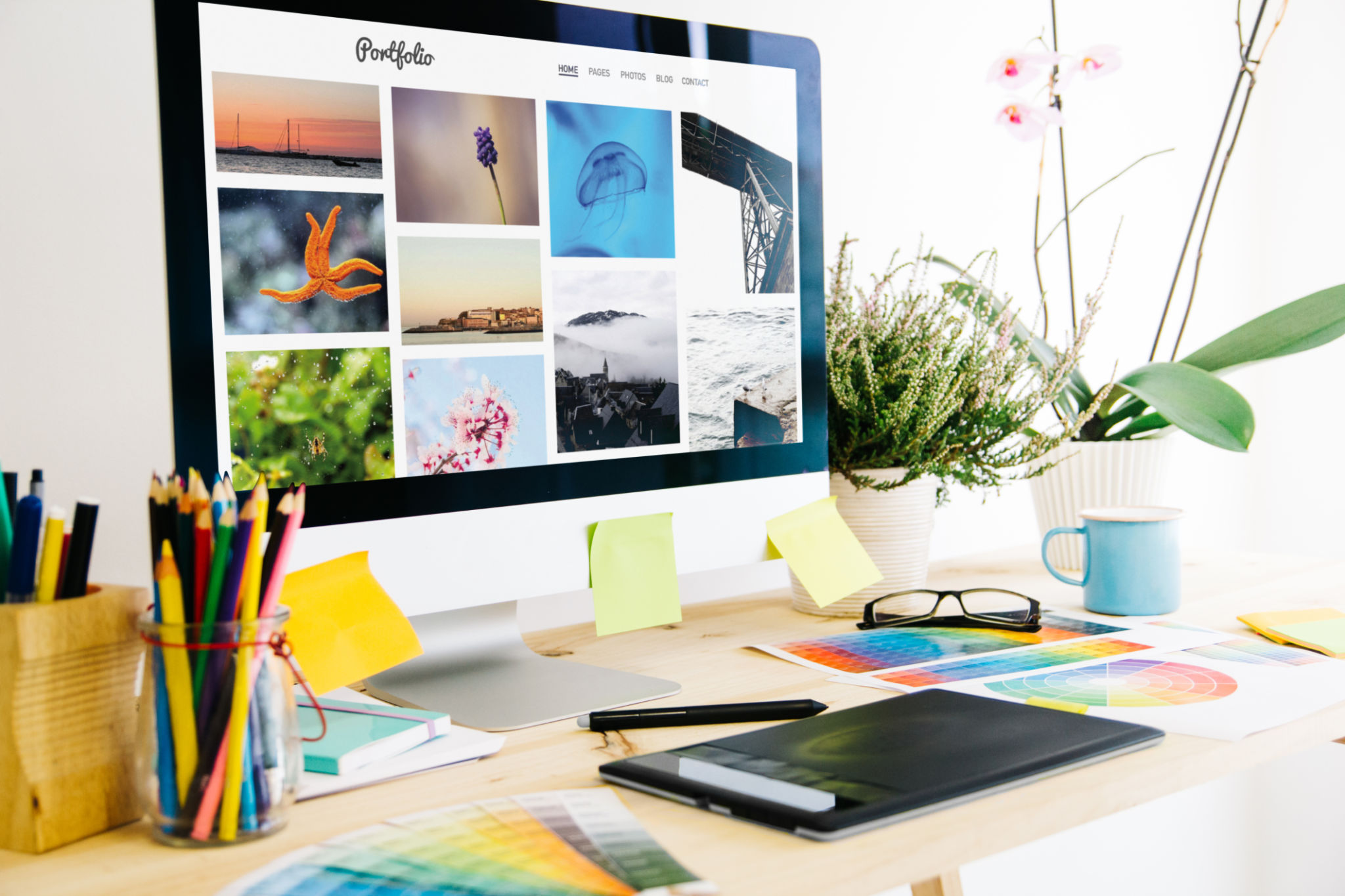Mastering the Art of Graphic Design: A Comprehensive Guide
Understanding the Basics of Graphic Design
Graphic design is a creative discipline that combines art and technology to communicate ideas visually. It involves a strategic blend of typography, color theory, imagery, and layout to convey a specific message or concept. Whether you're designing a logo, a website, or a marketing campaign, understanding the foundational principles of graphic design is crucial.
Some of the essential elements include balance, contrast, alignment, repetition, and proximity. Each of these elements plays a significant role in creating a cohesive and effective design. By mastering these basics, designers can create visually appealing and functional designs that resonate with their target audience.

The Role of Typography in Design
Typography is more than just choosing fonts; it's about arranging type to make written language legible, readable, and visually appealing. The choice of typeface can significantly impact the tone and effectiveness of a design. Understanding the difference between serif and sans-serif fonts, as well as how to use them appropriately, is key to creating impactful designs.
In addition to font choice, other typography considerations include hierarchy, line spacing, and alignment. These elements help guide the viewer’s eye through the design in a deliberate way, ensuring that the message is delivered clearly and effectively.

The Importance of Color Theory
Color is a powerful tool in graphic design that can evoke emotions and influence perceptions. A solid grasp of color theory allows designers to choose color palettes that enhance the overall aesthetic and effectiveness of their designs. Colors can be warm or cool, bright or muted, and each choice will have a different impact on the audience.
Understanding concepts such as complementary colors, analogous colors, and color harmony can help designers create visually appealing work that communicates effectively. Additionally, considering color accessibility ensures that designs are inclusive and can be appreciated by all viewers.

Imagery and Visual Elements
Images are an essential component of graphic design. They can capture attention, convey complex ideas quickly, and add visual interest to a design. However, selecting the right images requires careful consideration of their relevance, quality, and alignment with the brand's message.
Incorporating visual elements such as icons, illustrations, and textures can also enhance a design. These elements should be used strategically to support the overall message without overwhelming the viewer. Consistency in style and quality is crucial to maintaining a professional look.

Tools and Software for Graphic Design
In today's digital age, having proficiency in graphic design software is essential for any designer. Popular tools like Adobe Photoshop, Illustrator, and InDesign provide powerful features that allow designers to bring their visions to life. Each tool has its strengths, making them suitable for different aspects of design work.
In addition to traditional software, there are numerous online platforms that offer user-friendly interfaces for beginners. Tools like Canva and Figma are gaining popularity for their accessibility and collaborative features. Exploring different tools can help designers find the best fit for their workflow and project needs.

Building a Strong Portfolio
A well-curated portfolio is essential for showcasing your skills and attracting potential clients or employers. It's important to include a variety of projects that highlight your versatility and proficiency in different areas of graphic design. Each piece should demonstrate your understanding of design principles and your ability to solve visual problems creatively.
When building your portfolio, consider including personal projects alongside professional work. This not only showcases your passion for design but also provides insight into your creative process. Regularly updating your portfolio ensures it remains current and reflective of your latest skills and accomplishments.

Continuous Learning and Inspiration
The field of graphic design is constantly evolving with new trends, techniques, and technologies emerging regularly. Staying updated with industry developments is crucial for maintaining a competitive edge. Engaging with design communities, attending workshops, and following influential designers can provide inspiration and new insights.
Never underestimate the value of continuous learning. Whether through formal education or self-directed study, expanding your knowledge base will enhance your creativity and adaptability as a designer. Embracing new challenges will keep your work fresh and exciting.
